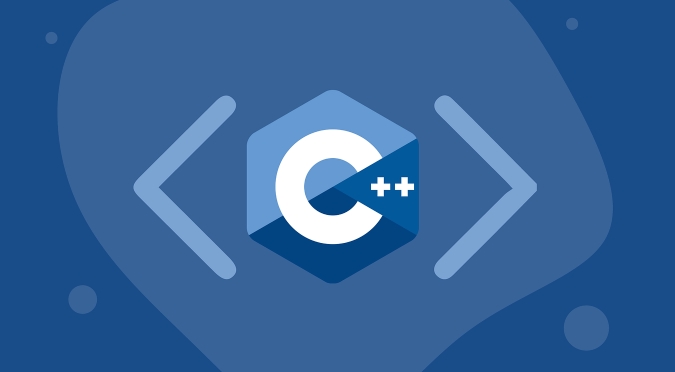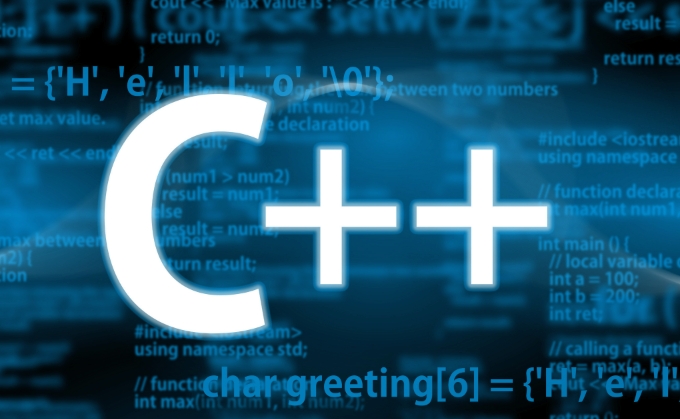Learning C is the foundation for mastering Unreal Engine, especially for beginners. 1. Clarify the learning purpose: C is used to implement tasks that cannot be completed by blueprints such as complex logic, performance optimization and plug-in development. 2. Configure the development environment: Install Visual Studio and Unreal Engine and ensure the components are complete, solving common compilation problems. 3. Master the class creation process: Create a new C class through the editor and inherit the UE basic class, and test the effect in the editor after writing the code. 4. Understand UE-specific mechanisms: use macros such as UCLASS() and UPROPERTY() to expose variables and functions to the blueprint, and use UE's built-in data structures. 5. Learn with the help of official resources: refer to sample projects and documents, use shortcut keys to view class definitions and proficient in using log system debugging programs.

Learning C is the basis for using Unreal Engine to make games, especially for developers who are just getting started. If you are just starting out with UE4 or UE5 and don't have much C experience, don't worry - in fact, you can get started quickly by just mastering a few key points.

1. First find out why you need C
Although Unreal Engine has a powerful Blueprint system, many high-performance, complex logic and custom functions still need to be completed in C. for example:

- Create custom actors and components
- Implement complex AI behavior or physical simulations
- Optimize performance bottlenecks
- Plug-in development or cross-platform support
Simply put: Blueprints are suitable for rapid prototyping and visual logic, and C is the way to truly control the core of the engine .
So the first step is not to rush to write code, but to figure out what problems you want to use C to solve and then decide what to learn.

2. Building a development environment is a key step
Before you start writing code, make sure your development environment is configured:
- Install Visual Studio (VS2022 or VS2019 recommended)
- Install Unreal Engine (compiled via Epic Launcher or source code)
- Check "C Developer Tools" and "Windows SDK" during installation
- Select the "With Starter Content" and "C" options when creating a project
FAQ:
- Compilation failed? Check that VS has the Desktop Development Workload installed.
- Don't see the "New C Class" option? Make sure there is a
.slnfile in the project directory. - After modifying Class C, can't you see the update in the editor? Remember to click the "Compile" button or regenerate the project.
3. Learn to create and use C class
Classes in UE usually inherit from basic classes such as UObject , AActor , UComponent , etc. You can create a new C class through the editor:
- Click File > New C Class in UE Editor
- Select the parent class (such as Actor)
- Enter the class name (such as
MyCharacter) - Compile and open Visual Studio editing code
For example: If you want a character to output a log once a second, you can add the following code to the Tick function in the .cpp file:
void AMyCharacter::Tick(float DeltaTime)
{
Super::Tick(DeltaTime);
UE_LOG(LogTemp, Warning, TEXT("This is a log message every tick"));
}Then drag this class into the level, and you will see the console output when you run the game.
4. Master the basic syntax and UE-specific mechanisms
Although you are learning C, UE has its own set of syntax extensions and mechanisms, such as:
-
UCLASS(),GENERATED_BODY(): Declare a UObject class -
UPROPERTY(): Expose variables to blueprint or editor -
UFUNCTION(): Expose the function to call the blueprint - Data structures such as
FStringandFVectorreplace standard library types
For example, if you want a variable to be modified in the editor, you can write it like this:
UPROPERTY(EditAnywhere, Category = "Movement") float MoveSpeed;
In this way, when selecting this Actor in the editor, you can directly adjust the value of MoveSpeed .
5. Read more official examples and documents
Unreal provides many official sample projects, such as Shooter Game, TPS Demo, etc., which have complete C implementations. suggestion:
- Download these projects to see how they organize their code
- Check out Unreal official documentation (especially API reference)
- Quickly jump to class definition in editor using
Shift F12
In addition, the UE's logging system is very practical, and it is a good habit to learn to use UE_LOG to debug programs.
Basically that's it. C is indeed important for UE, but you don’t need to learn too deeply from the beginning. The key is to learn and practice. First set up the environment and try writing a few subcategories, and you will gradually become familiar with it.
The above is the detailed content of C tutorial for Unreal Engine 4/5. For more information, please follow other related articles on the PHP Chinese website!

Hot AI Tools

Undress AI Tool
Undress images for free

Undresser.AI Undress
AI-powered app for creating realistic nude photos

AI Clothes Remover
Online AI tool for removing clothes from photos.

Clothoff.io
AI clothes remover

Video Face Swap
Swap faces in any video effortlessly with our completely free AI face swap tool!

Hot Article

Hot Tools

Notepad++7.3.1
Easy-to-use and free code editor

SublimeText3 Chinese version
Chinese version, very easy to use

Zend Studio 13.0.1
Powerful PHP integrated development environment

Dreamweaver CS6
Visual web development tools

SublimeText3 Mac version
God-level code editing software (SublimeText3)
 Using std::chrono in C
Jul 15, 2025 am 01:30 AM
Using std::chrono in C
Jul 15, 2025 am 01:30 AM
std::chrono is used in C to process time, including obtaining the current time, measuring execution time, operation time point and duration, and formatting analysis time. 1. Use std::chrono::system_clock::now() to obtain the current time, which can be converted into a readable string, but the system clock may not be monotonous; 2. Use std::chrono::steady_clock to measure the execution time to ensure monotony, and convert it into milliseconds, seconds and other units through duration_cast; 3. Time point (time_point) and duration (duration) can be interoperable, but attention should be paid to unit compatibility and clock epoch (epoch)
 How to get a stack trace in C ?
Jul 07, 2025 am 01:41 AM
How to get a stack trace in C ?
Jul 07, 2025 am 01:41 AM
There are mainly the following methods to obtain stack traces in C: 1. Use backtrace and backtrace_symbols functions on Linux platform. By including obtaining the call stack and printing symbol information, the -rdynamic parameter needs to be added when compiling; 2. Use CaptureStackBackTrace function on Windows platform, and you need to link DbgHelp.lib and rely on PDB file to parse the function name; 3. Use third-party libraries such as GoogleBreakpad or Boost.Stacktrace to cross-platform and simplify stack capture operations; 4. In exception handling, combine the above methods to automatically output stack information in catch blocks
 What is a POD (Plain Old Data) type in C ?
Jul 12, 2025 am 02:15 AM
What is a POD (Plain Old Data) type in C ?
Jul 12, 2025 am 02:15 AM
In C, the POD (PlainOldData) type refers to a type with a simple structure and compatible with C language data processing. It needs to meet two conditions: it has ordinary copy semantics, which can be copied by memcpy; it has a standard layout and the memory structure is predictable. Specific requirements include: all non-static members are public, no user-defined constructors or destructors, no virtual functions or base classes, and all non-static members themselves are PODs. For example structPoint{intx;inty;} is POD. Its uses include binary I/O, C interoperability, performance optimization, etc. You can check whether the type is POD through std::is_pod, but it is recommended to use std::is_trivia after C 11.
 How to call Python from C ?
Jul 08, 2025 am 12:40 AM
How to call Python from C ?
Jul 08, 2025 am 12:40 AM
To call Python code in C, you must first initialize the interpreter, and then you can achieve interaction by executing strings, files, or calling specific functions. 1. Initialize the interpreter with Py_Initialize() and close it with Py_Finalize(); 2. Execute string code or PyRun_SimpleFile with PyRun_SimpleFile; 3. Import modules through PyImport_ImportModule, get the function through PyObject_GetAttrString, construct parameters of Py_BuildValue, call the function and process return
 What is function hiding in C ?
Jul 05, 2025 am 01:44 AM
What is function hiding in C ?
Jul 05, 2025 am 01:44 AM
FunctionhidinginC occurswhenaderivedclassdefinesafunctionwiththesamenameasabaseclassfunction,makingthebaseversioninaccessiblethroughthederivedclass.Thishappenswhenthebasefunctionisn’tvirtualorsignaturesdon’tmatchforoverriding,andnousingdeclarationis
 How to pass a function as a parameter in C ?
Jul 12, 2025 am 01:34 AM
How to pass a function as a parameter in C ?
Jul 12, 2025 am 01:34 AM
In C, there are three main ways to pass functions as parameters: using function pointers, std::function and Lambda expressions, and template generics. 1. Function pointers are the most basic method, suitable for simple scenarios or C interface compatible, but poor readability; 2. Std::function combined with Lambda expressions is a recommended method in modern C, supporting a variety of callable objects and being type-safe; 3. Template generic methods are the most flexible, suitable for library code or general logic, but may increase the compilation time and code volume. Lambdas that capture the context must be passed through std::function or template and cannot be converted directly into function pointers.
 What is a null pointer in C ?
Jul 09, 2025 am 02:38 AM
What is a null pointer in C ?
Jul 09, 2025 am 02:38 AM
AnullpointerinC isaspecialvalueindicatingthatapointerdoesnotpointtoanyvalidmemorylocation,anditisusedtosafelymanageandcheckpointersbeforedereferencing.1.BeforeC 11,0orNULLwasused,butnownullptrispreferredforclarityandtypesafety.2.Usingnullpointershe
 How does std::move work in C ?
Jul 07, 2025 am 01:27 AM
How does std::move work in C ?
Jul 07, 2025 am 01:27 AM
std::move does not actually move anything, it just converts the object to an rvalue reference, telling the compiler that the object can be used for a move operation. For example, when string assignment, if the class supports moving semantics, the target object can take over the source object resource without copying. Should be used in scenarios where resources need to be transferred and performance-sensitive, such as returning local objects, inserting containers, or exchanging ownership. However, it should not be abused, because it will degenerate into a copy without a moving structure, and the original object status is not specified after the movement. Appropriate use when passing or returning an object can avoid unnecessary copies, but if the function returns a local variable, RVO optimization may already occur, adding std::move may affect the optimization. Prone to errors include misuse on objects that still need to be used, unnecessary movements, and non-movable types






